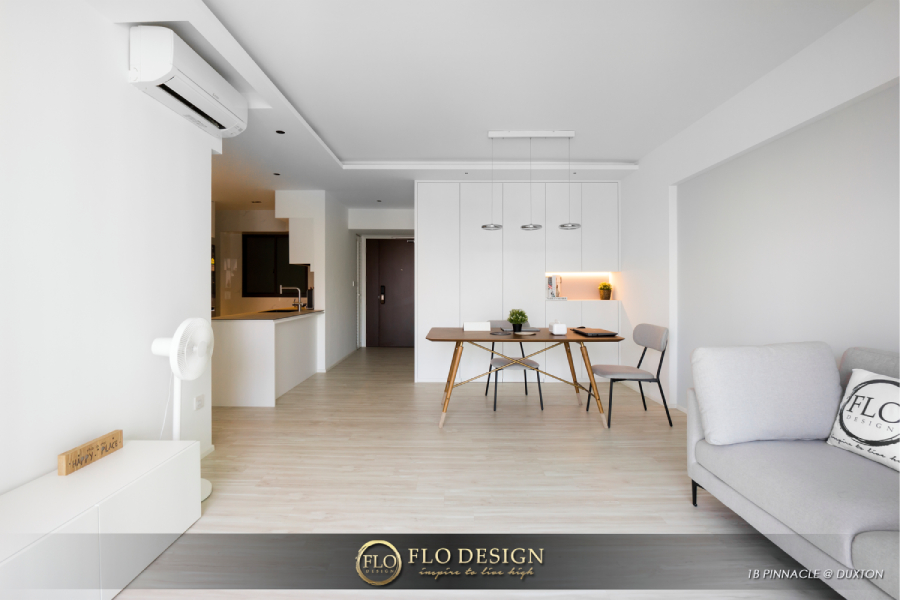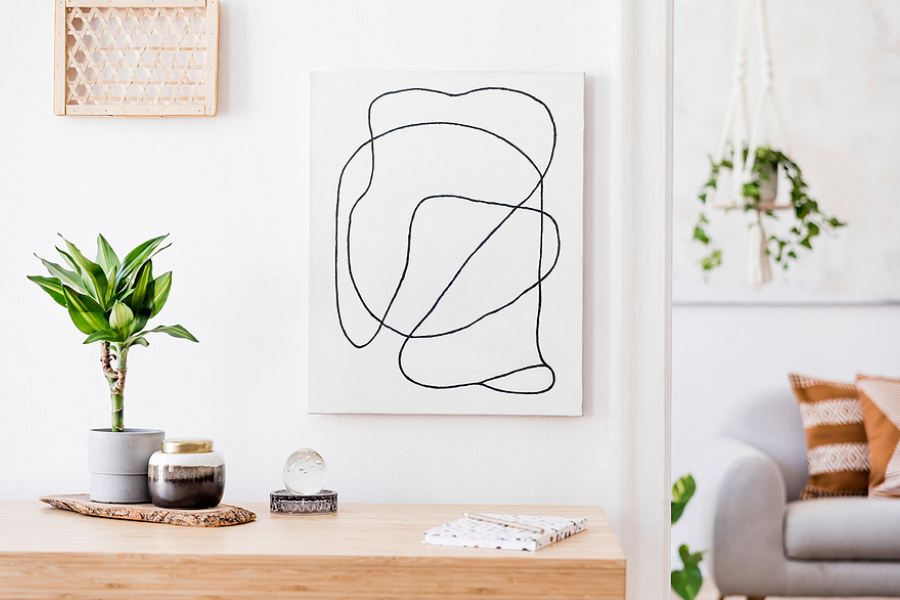
In a world inundated with constant stimulation and clutter, the minimalist interior design movement offers a breath of fresh air. Defined by simplicity, functionality, and a focus on essentials, minimalist design emphasises the beauty of space and light while promoting a sense of calm and clarity.
Whether you're downsizing to a smaller living space or simply seeking to declutter your home environment, adopting minimalist principles can transform your interior into a sanctuary of peace and serenity. In this article, we'll explore essential tips for embracing minimalist interior design and creating spaces that inspire simplicity and harmony.
1. Decluttering and Simplifying
At the core of minimalist design lies the principle of decluttering.
Start by assessing your belongings and identifying items with no practical purpose or sentimental value. Embrace the "less is more" mantra by purging unnecessary possessions and embracing a more streamlined lifestyle. Minimalism encourages mindfulness in consumption, focusing on quality over quantity and prioritising items that bring joy and utility.
2. Embracing Neutral Color Palettes
Neutral colour schemes form the foundation of minimalist interiors, creating a sense of cohesion and tranquillity.
Opt for shades of white, beige, and grey to establish a serene backdrop that accentuates your home's natural light and space. Neutral tones promote visual continuity and allow key design elements, such as furniture and architectural features, to stand out without overwhelming the senses.
3. Streamlined Furniture Selection
When selecting furniture for a minimalist interior, prioritise clean lines, functionality, and simplicity of form. It is best to choose pieces with sleek profiles and minimal embellishments to maintain a cohesive aesthetic.
Additionally, we recommend multipurpose furniture solutions, such as modular sofas with built-in storage or extendable dining tables, to maximise space efficiency while minimising clutter.
4. Maximising Natural Light
Natural light is a cornerstone of minimalist design, illuminating spaces and accentuating their inherent beauty. Maximise the flow of natural light by strategically positioning windows, removing heavy drapery, and incorporating reflective surfaces, such as mirrors or glass tabletops, to bounce light throughout the room. Moreover, sheer curtains or blinds can provide privacy without obstructing sunlight, allowing for a seamless integration of indoor and outdoor spaces.
5. Creating Visual Interest Through Texture
While minimalist interiors are characterized by simplicity, incorporating texture adds depth and visual interest to the design.
Introduce tactile elements such as natural wood grains, woven textiles, and tactile surfaces to create a sense of warmth and cosiness. Contrast smooth finishes with rough textures to create dynamic interplay and tactile richness within the space. It also helps to consider incorporating organic materials like stone, marble, or concrete to infuse the environment with a sense of authenticity and earthiness.
6. Practicing Thoughtful Arrangement
In minimalist design, every element serves a purpose and contributes to the overall harmony of the space.
Practice thoughtful arrangement by editing your decor and arranging items with intentionality. It is also critical to avoid overcrowding surfaces; you should embrace negative space to allow the eye to rest and appreciate the beauty of simplicity. Group similar objects together to create visual cohesion, and use asymmetrical arrangements to add visual intrigue while maintaining balance.
7. Cultivating a Sense of Serenity
Ultimately, minimalist design is about creating spaces that evoke a sense of serenity and tranquillity.
You can cultivate a calming atmosphere by eliminating distractions and creating zones dedicated to relaxation and rejuvenation. Moreover, it helps to incorporate elements of nature, such as indoor plants or natural materials, to evoke a connection to the outdoors and promote well-being.

Conclusion
Minimalist interior design offers a transformative approach to living, inviting individuals to embrace simplicity, clarity, and intentionality in their surroundings. Whether you're downsizing to a smaller living space or seeking to create a sanctuary of peace within your home, embracing minimalist principles can lead to a more fulfilling and meaningful living experience.
If you’re interested in engaging interior design services in Singapore, reach out to us at Flo Design. As our team of experts is experienced in projects of all kinds, from condo to BTO interior design, we can definitely help transform your living space into your dream home.




